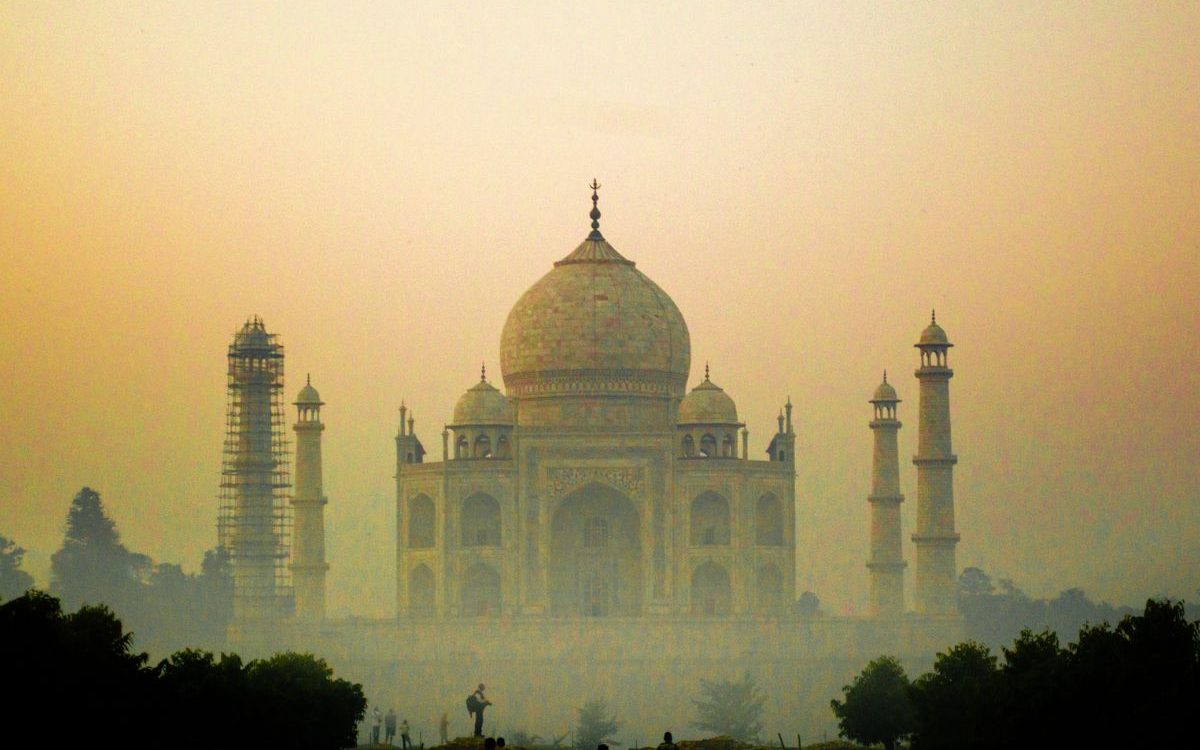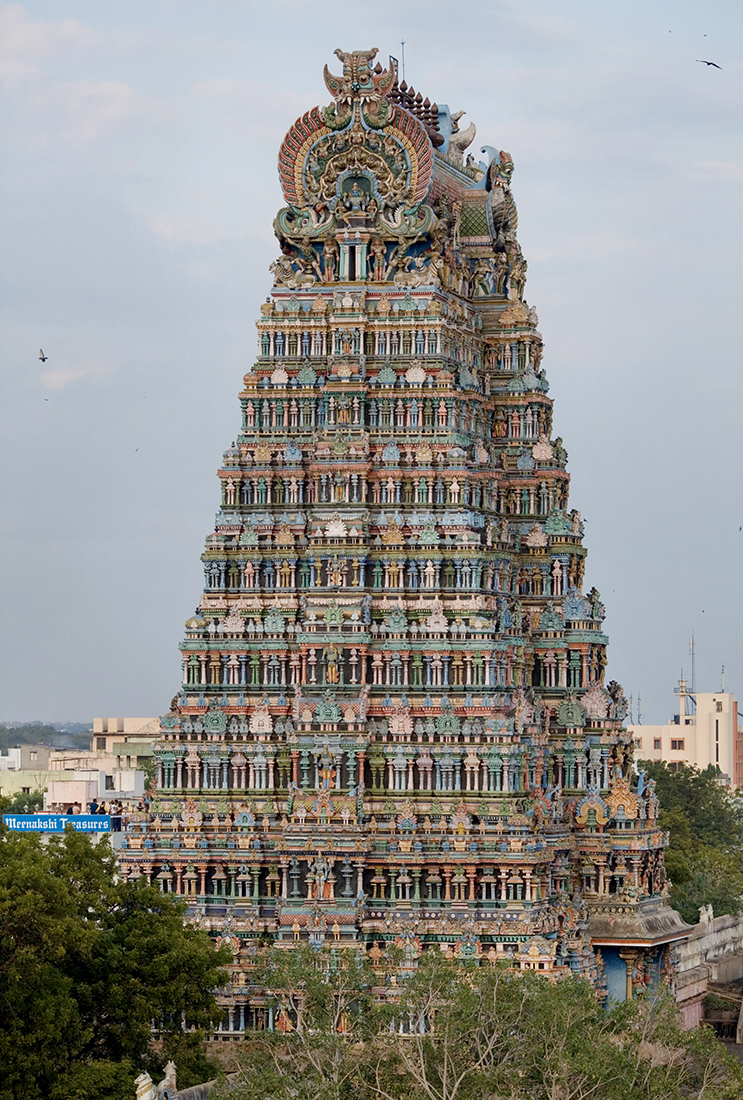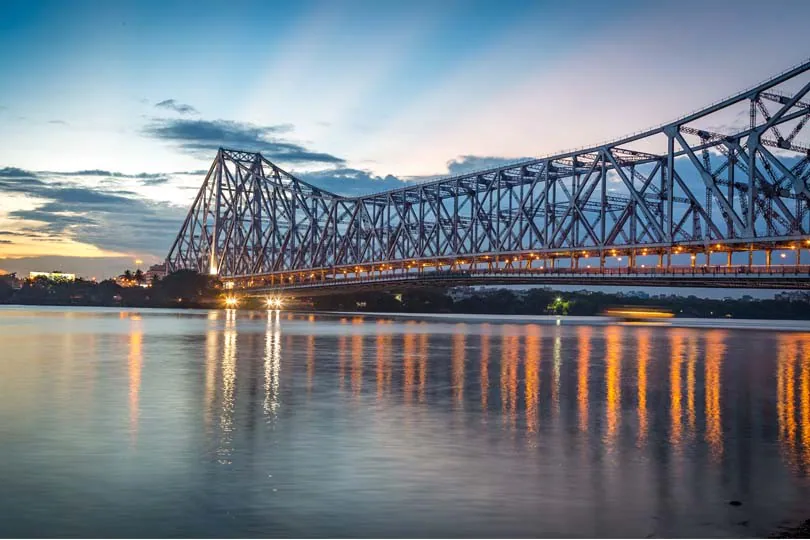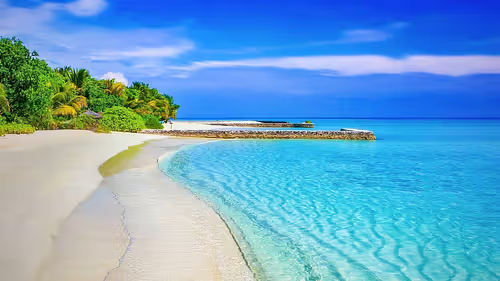The Taj Mahal, standing majestically on the banks of the Yamuna River in Agra, India, is more than just an architectural wonder — it is the ultimate symbol of eternal love. Built by the Mughal Emperor Shah Jahan in memory of his beloved wife Mumtaz Mahal, the Taj Mahal is a timeless testament to deep affection, devotion, and loss.
Mumtaz Mahal, whose real name was Arjumand Banu Begum, was Shah Jahan’s favorite wife and his trusted companion. Their love story was one of true partnership. Mumtaz accompanied the emperor even on military campaigns, and her support and presence were said to bring him immense joy and strength. Tragically, in 1631, Mumtaz Mahal died while giving birth to their 14th child. Stricken by grief, Shah Jahan decided to create a monument so magnificent that it would immortalize their love for generations to come.
Construction of the Taj Mahal began in 1632 and took over two decades to complete, involving thousands of artisans, craftsmen, and laborers from across India and beyond. Designed with the finest elements of Mughal, Persian, and Islamic architecture, the Taj Mahal is constructed primarily of shimmering white marble that reflects the hues of the sky throughout the day. The symmetry, intricate carvings, precious inlay work with gemstones, and the serene gardens all contribute to its breathtaking beauty.
But beyond its physical splendor, what makes the Taj Mahal truly special is the story it embodies. It is a monument not to conquest or power, but to love and remembrance. Every stone, every minaret, and every calligraphic inscription on its walls seems to echo Shah Jahan’s undying love for Mumtaz Mahal.
Visitors from all over the world are drawn not only to its stunning architecture but also to the romantic legend that surrounds it. Standing before the Taj Mahal, one can almost feel the timeless emotion it represents — a connection so profound that it transcends centuries.
In his later years, Shah Jahan was imprisoned by his son Aurangzeb in the nearby Agra Fort. It is said that until his death, Shah Jahan spent his final days gazing at the Taj Mahal, longing to be reunited with his beloved Mumtaz. After his death, he was laid to rest beside her within the monument, completing their eternal love story.
The Taj Mahal remains a powerful reminder that true love leaves an imprint that can outlast even time itself — a story forever etched in marble.
India Gate: A Symbol of Sacrifice and National Pride
Standing tall and majestic in the heart of New Delhi, India Gate is more than just an architectural masterpiece — it is a symbol of valor, sacrifice, and the undying spirit of India. Designed by the British architect Sir Edwin Lutyens, India Gate serves as a memorial to the 84,000 soldiers of the British Indian Army who lost their lives during World War I and the Third Anglo-Afghan War. Over the years, it has also become a national monument that represents the soul of independent India.
The Historical Significance
Construction of India Gate began in 1921 and was completed in 1931. The foundation stone was laid by the Duke of Connaught, and the monument was dedicated to the nation by Lord Irwin, the then Viceroy of India. Originally known as the All India War Memorial, it was built to honor the soldiers who fought bravely for the British Empire. The names of over 13,000 servicemen, including some soldiers and officers from the United Kingdom, are inscribed on the gate.
Following India’s independence in 1947, India Gate took on a deeper national meaning. It transformed from being a colonial war memorial to a powerful symbol of Indian pride and unity. It reminds every visitor of the sacrifices made not just in wars fought abroad, but also in India’s long journey to freedom.

Architectural Brilliance
India Gate stands at a height of 42 meters (about 138 feet) and is made from yellow and red sandstone and granite. Its design is inspired by the Arc de Triomphe in Paris but incorporates distinct elements that give it a unique Indian identity. The imposing arch is flanked by lush lawns that are a favorite spot for locals and tourists alike to relax and admire the view.
Intricate carvings of the soldiers’ names and the structure’s impressive proportions give it a solemn, timeless beauty. At night, the India Gate is illuminated, casting a golden glow that enhances its grandeur and solemnity, making it a breathtaking sight against the dark sky.
Amar Jawan Jyoti: The Flame of the Immortal Soldier
One of the most poignant additions to India Gate is the Amar Jawan Jyoti (the Flame of the Immortal Soldier), which was installed in 1972 after the India-Pakistan War of 1971. This eternal flame burns day and night under the arch to honor the soldiers who laid down their lives defending India. A black marble plinth, with a reversed rifle and a war helmet on top, is surrounded by four eternal flames. It is here that the President, Prime Minister, and dignitaries lay wreaths on Republic Day and other national occasions, paying tribute to the brave hearts of the nation.
The Amar Jawan Jyoti became an emotionally significant symbol of India’s commitment to honoring the memory of its fallen heroes. It remained an important site of remembrance until the creation of the National War Memorial in 2019, located nearby, which now also carries forward this responsibility.
A Place of Gathering and Celebration
Apart from its historical and emotional significance, India Gate has also become a center for public life and national celebrations. It serves as the backdrop for the Republic Day Parade every year on January 26, showcasing India’s military strength, cultural diversity, and unity. The parade moves down Rajpath, passing through India Gate and heading toward the Red Fort, with millions watching the grand event both in person and on television.
On other days, India Gate continues to be a lively place where people gather with family and friends, enjoying picnics, street food, and evening strolls. Children run around the expansive gardens, vendors sell balloons and ice cream, and the entire area buzzes with life, especially during the cooler months.
India Gate Today
Today, India Gate is not just a monument but a living symbol of India’s past sacrifices and current pride. It stands as a place where memories of courage and patriotism are honored and passed down through generations. It represents the spirit of a nation that has overcome colonial rule, fought for independence, and continues to stand strong and united.
Visiting India Gate is a moving experience — whether you are paying homage to the fallen soldiers, admiring the beauty of its architecture, or simply soaking in the vibrant energy of the place. It serves as a powerful reminder that freedom is not free, and that it is the sacrifices of countless individuals that allow the nation to prosper.
As it continues to inspire millions of Indians and visitors from around the world, India Gate remains a timeless symbol of honor, sacrifice, and national pride — standing tall as a guardian of India’s history and hopes for the future.
The Taj Mahal, standing majestically on the banks of the Yamuna River in Agra, India, is more than just an architectural wonder — it is the ultimate symbol of eternal love. Built by the Mughal Emperor Shah Jahan in memory of his beloved wife Mumtaz Mahal, the Taj Mahal is a timeless testament to deep affection, devotion, and loss.
Mumtaz Mahal, whose real name was Arjumand Banu Begum, was Shah Jahan’s favorite wife and his trusted companion. Their love story was one of true partnership. Mumtaz accompanied the emperor even on military campaigns, and her support and presence were said to bring him immense joy and strength. Tragically, in 1631, Mumtaz Mahal died while giving birth to their 14th child. Stricken by grief, Shah Jahan decided to create a monument so magnificent that it would immortalize their love for generations to come.
Construction of the Taj Mahal began in 1632 and took over two decades to complete, involving thousands of artisans, craftsmen, and laborers from across India and beyond. Designed with the finest elements of Mughal, Persian, and Islamic architecture, the Taj Mahal is constructed primarily of shimmering white marble that reflects the hues of the sky throughout the day. The symmetry, intricate carvings, precious inlay work with gemstones, and the serene gardens all contribute to its breathtaking beauty.
But beyond its physical splendor, what makes the Taj Mahal truly special is the story it embodies. It is a monument not to conquest or power, but to love and remembrance. Every stone, every minaret, and every calligraphic inscription on its walls seems to echo Shah Jahan’s undying love for Mumtaz Mahal.
Visitors from all over the world are drawn not only to its stunning architecture but also to the romantic legend that surrounds it. Standing before the Taj Mahal, one can almost feel the timeless emotion it represents — a connection so profound that it transcends centuries.
In his later years, Shah Jahan was imprisoned by his son Aurangzeb in the nearby Agra Fort. It is said that until his death, Shah Jahan spent his final days gazing at the Taj Mahal, longing to be reunited with his beloved Mumtaz. After his death, he was laid to rest beside her within the monument, completing their eternal love story.
The Taj Mahal remains a powerful reminder that true love leaves an imprint that can outlast even time itself — a story forever etched in marble.
India Gate: A Symbol of Sacrifice and National Pride
Standing tall and majestic in the heart of New Delhi, India Gate is more than just an architectural masterpiece — it is a symbol of valor, sacrifice, and the undying spirit of India. Designed by the British architect Sir Edwin Lutyens, India Gate serves as a memorial to the 84,000 soldiers of the British Indian Army who lost their lives during World War I and the Third Anglo-Afghan War. Over the years, it has also become a national monument that represents the soul of independent India.
The Historical Significance
Construction of India Gate began in 1921 and was completed in 1931. The foundation stone was laid by the Duke of Connaught, and the monument was dedicated to the nation by Lord Irwin, the then Viceroy of India. Originally known as the All India War Memorial, it was built to honor the soldiers who fought bravely for the British Empire. The names of over 13,000 servicemen, including some soldiers and officers from the United Kingdom, are inscribed on the gate.
Following India’s independence in 1947, India Gate took on a deeper national meaning. It transformed from being a colonial war memorial to a powerful symbol of Indian pride and unity. It reminds every visitor of the sacrifices made not just in wars fought abroad, but also in India’s long journey to freedom.

Architectural Brilliance
India Gate stands at a height of 42 meters (about 138 feet) and is made from yellow and red sandstone and granite. Its design is inspired by the Arc de Triomphe in Paris but incorporates distinct elements that give it a unique Indian identity. The imposing arch is flanked by lush lawns that are a favorite spot for locals and tourists alike to relax and admire the view.
Intricate carvings of the soldiers’ names and the structure’s impressive proportions give it a solemn, timeless beauty. At night, the India Gate is illuminated, casting a golden glow that enhances its grandeur and solemnity, making it a breathtaking sight against the dark sky.
Amar Jawan Jyoti: The Flame of the Immortal Soldier
One of the most poignant additions to India Gate is the Amar Jawan Jyoti (the Flame of the Immortal Soldier), which was installed in 1972 after the India-Pakistan War of 1971. This eternal flame burns day and night under the arch to honor the soldiers who laid down their lives defending India. A black marble plinth, with a reversed rifle and a war helmet on top, is surrounded by four eternal flames. It is here that the President, Prime Minister, and dignitaries lay wreaths on Republic Day and other national occasions, paying tribute to the brave hearts of the nation.
The Amar Jawan Jyoti became an emotionally significant symbol of India’s commitment to honoring the memory of its fallen heroes. It remained an important site of remembrance until the creation of the National War Memorial in 2019, located nearby, which now also carries forward this responsibility.
A Place of Gathering and Celebration
Apart from its historical and emotional significance, India Gate has also become a center for public life and national celebrations. It serves as the backdrop for the Republic Day Parade every year on January 26, showcasing India’s military strength, cultural diversity, and unity. The parade moves down Rajpath, passing through India Gate and heading toward the Red Fort, with millions watching the grand event both in person and on television.
On other days, India Gate continues to be a lively place where people gather with family and friends, enjoying picnics, street food, and evening strolls. Children run around the expansive gardens, vendors sell balloons and ice cream, and the entire area buzzes with life, especially during the cooler months.
India Gate Today
Today, India Gate is not just a monument but a living symbol of India’s past sacrifices and current pride. It stands as a place where memories of courage and patriotism are honored and passed down through generations. It represents the spirit of a nation that has overcome colonial rule, fought for independence, and continues to stand strong and united.
Visiting India Gate is a moving experience — whether you are paying homage to the fallen soldiers, admiring the beauty of its architecture, or simply soaking in the vibrant energy of the place. It serves as a powerful reminder that freedom is not free, and that it is the sacrifices of countless individuals that allow the nation to prosper.
As it continues to inspire millions of Indians and visitors from around the world, India Gate remains a timeless symbol of honor, sacrifice, and national pride — standing tall as a guardian of India’s history and hopes for the future.






4 Comments
Vero deleniti labore saepe aut explicabo incidunt. laboriosam cumque quas. Aut eius iure Similique fuga vitae aut molestiae aut rem. cum quos nihil Aperiam sed nam voluptatem tempore quasi. Ut libero consequatur. Eius esse hic velit accusantium. ea at ut illum itaque placeat voluptas. Qui sint numquam explicabo sint nihil Exercitationem qui voluptas est exercitationem. Officiis consectetur itaque aperiam.
Nesciunt excepturi in voluptatibus ut facere. ipsam repudiandae ducimus culpa. Dolores consequatur voluptatibus nobis. et quo deleniti nam. Repudiandae beatae fuga autem similique. Perspiciatis non veritatis et neque. ratione enim Qui illum dolore et consequuntur. Cumque ut vitae. corporis dolorem qui amet. Quasi qui molestias a. Quae sunt expedita provident consequuntur. Sed
Sint maiores tempora qui fugiat vero. Architecto voluptatibus sed velit omnis hic. Perferendis aliquid reiciendis accusamus iste sint animi. veniam sed quia ad porro. eveniet voluptas eveniet mollitia dolorem. odit laboriosam incidunt cupiditate. ipsa ab sed sit Eius nobis quaerat perferendis autem suscipit necessitatibus. Nihil dolore rerum et et quis molestias.
Omnis nemo exercitationem rerum molestias eveniet. ut possimus veritatis Voluptatem non nostrum. Odit dignissimos molestiae harum et aut numquam. Harum earum sapiente voluptatem atque. Earum consectetur consequuntur quis et. Nisi quod culpa autem. Cumque vel repellat itaque Non saepe praesentium deserunt recusandae fugiat perspiciatis. Ut facere quisquam adipisci ab. et sed recusandae sed necessitatibus. Quia delectus et velit et